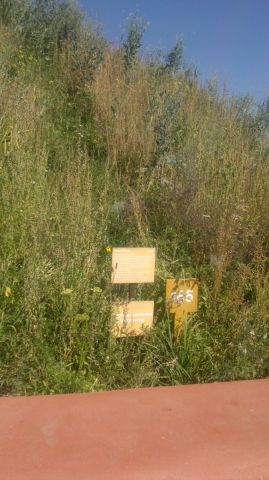Current Reading: Commentary by Michael Crang – Negative images of consumption: cast offs and casts of self and society (2012) Environment and Planning A, volume 44, pages 763 – 767
“There has been a recent spate of artistic work focusing on (over)consumption using the lens of disposal and discard. In this brief commentary I will try to sketch out a few common themes across some of this work, showing how it connects with and challenges social science work on consumption and which registers it uses for thinking about the waste our societies create.”
Crang forms a critical framework of influence with reference to Michel de Certeau’s consuming as appropriation (The Practice of Everyday Life, 1984), Georges Bataille’s sense of destructive excess and Robert Smithson argument that separate ‘things’, ‘forms’, ‘objects’, shapes’ were mere convenient fictions (The Collected Writings, 1996, page 112).
He further draws upon Jennifer Gonzalez (Prosthetic Territories: Politics and Hypertechnologies, 1995, pp.133-150) on autotopography: how our possessions form a terrain through which we express, enact, and sustain our selves and mnemotechology [of or relating to or involved the practice of aiding the memory] and Louise Crewe (Environment and Planning D: Society and Space 29, 2011, pp.27-46); “The cataloguing of possessions as a performance of self has recently been tracked through different artistic registers that explore how even ridding ourselves of objects leaves their traces.”
David Trotter is also cited on describing how meaning and value is lost through the household clearance in a double reduction from cherished possession to commodity; from commodity to matter, or stuff. (Critical Quarterly 52, 2009, pp.17-28) Firstly, “the first reduction deprives objects of their past, of that surplus of meaning and value they have acquired since their purchase: of everything but their exchange value in the here and now,” and secondly, “enforced by the ruthless skepticism of the bargain-hunters who thumb curtains, prod mattresses, and clap wardrobe drawers to and fro, [and] deprive the objects awaiting disposal not only of their past, but of their future as well. It demonstrates that these still radiant commodities have, beyond a certain point, no future at all. The reduction from commodity to waste-matter which household clearance distinctively fosters is not just the assault of one system of value and meaning on another. It is an assault on the very possibility of systems of value and meaning.”
Crang compares Michael Landy’s Break Down (2001) and Hans Schabus’ Remains of the Day (2011). Michael Landy’s Break Down catalogued and classified all his possessions into 7227 items which he then sent through a granulator to render into them into their constituent materials which were then shipped to a landfill. For Remains of the Day Hans Schabus filled two gallery rooms with neatly categorised and sorted rubbish he and his family threw out over the course of a calendar year. The gallery space sanitises the objects.
Michael Landy – Break Down (2001) video http://www.youtube.com/watch?v=6hYUnkW4sNA
Hans Schabus – Remains of the Day (2011) at Collective Gallery, Edinburgh http://www.collectivegallery.net/past.html
Crang also comments on Wang Jiulang’s video Beijing Besieged by Waste (2008-2010) and compares two works by Chris Jordan; his ongoing Midway: Message from the Gyre (2009-current) examining the Great Pacific Garbage Patch through recording the plastic-riddled stomach contents of hundreds of dead albatross chicks and his contrasting previous project previous Running the Numbers: An American Self Portrait (2006-current) photoshopping objects of consumption and multiplying them into immense scales to visualise the aggregate materiality of consumerism.
Wang Jiulang – Beijing Besieged by Waste (2008-2010) http://www.guardian.co.uk/environment/gallery/2010/mar/26/beijing-rubbish-wang-jiuliang-photography
Chris Jordan – Midway: Message from the Gyre (2009-current) http://www.chrisjordan.com/gallery/midway
Chris Jordan – Running the Numbers: An American Self Portrait (2006-current) http://www.chrisjordan.com/gallery/rtn/#car-keys
Crang’s commentary is a short and theoretically underpinned snapshot into a couple of current practices of artists dealing directly with their own immediate waste and the mass waste of society at large. A narrative of citations is woven together illustrating the proposition of waste as the “negative casts” of life.
http://www.envplan.com/epa/editorials/a44682.pdf











